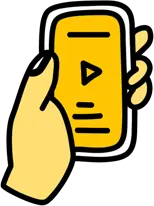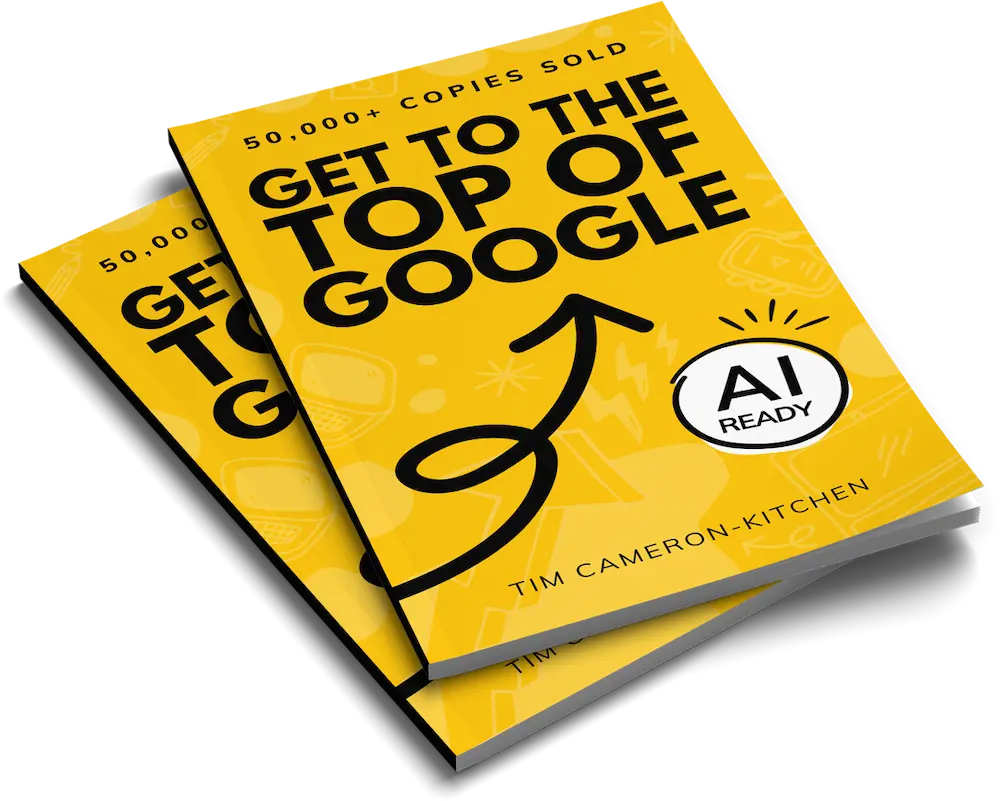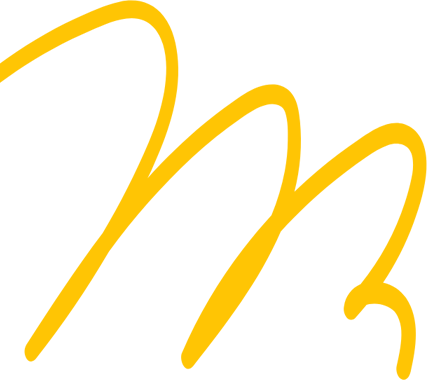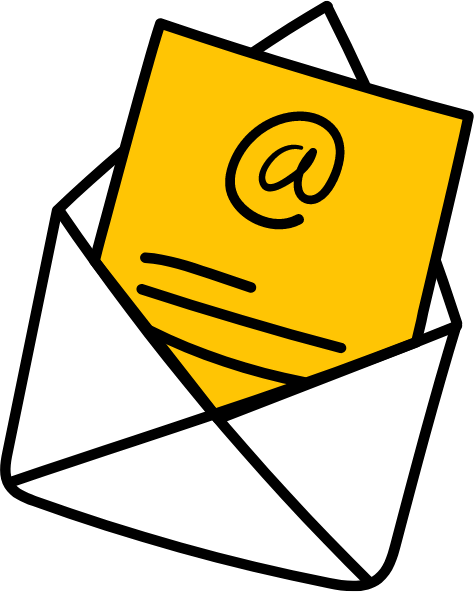Contents

- What is a sales funnel?
- Why does your website need a sales funnel?
- The four levels of the conversion funnel
- Why you need to optimise your website's sales funnel
- 8 ways to optimise your website's sales funnel
- Understand your audience
- Identify your customer journey
- Set goals and measure your progress
- Analyse your existing content
- Use the right content at each stage of the sales funnel
- Take a look at competitors
- Evaluate your customer journey
- Optimise your website's sales funnel
- Recap
- What To Read Next

Get Weekly Marketing Tips
Join 30,000+ marketers and get the best marketing tips every week in your inbox
As more purchasing habits move online, and websites acting more like store fronts than brochures every day, it’s no surprise that the sales funnel has adapted to match this.
With so many other websites vying for your ideal customer’s attention, you need to make sure your sales funnels are as optimised as they can be.
This guide talks you through exactly what a sales funnel is, why your website needs one and how you can optimise it.
This involves your entire marketing strategy, not just your website, and also covers how to keep existing customers coming back.
Ready to create an effective website sales funnel?
Let’s go.
What is a sales funnel?
The term “sales funnel” is used to describe the journey your target audience takes before they become leads and customers.
It’s referred to as a funnel even though the process is less funnel shaped these days, with more touch points and more flexibility. The phrase was coined by E. St Elmo Lewis back in 1898 and stuck, despite it no longer being the same process it once was.
There are four different levels to this funnel:
- Awareness
- Interest
- Desire
- Action
Each stage of the funnel requires different content and tactics to ensure you move your customers closer towards conversion.
Infographic showing the 4 stages of the sales funnel / conversion funnel
Why does your website need a sales funnel?
When customers order online you may feel like you have less control over the sales funnel, but we’d like to reassure you that is not the case.
Here at Thinkplus we often tell our clients that their website should be as good as their best sales person.
Think about the type of information your best salesperson shares with customers at the different stages of their journey to purchasing.
Is what they say to the person who is just having a browse different to what they say to the returning customer?
If you don’t have a sales team, or are fully online, try and imagine what this salesperson would be like if you had a physical store.
Now think about your ideal customer.
- What type of questions do they ask?
- How much do they spend on average?
- Is this a one time or infrequent purchase or do they have the potential to become a repeat customer?
Thinking about your ideal sales person and your ideal customer will help you decide what you need to focus on for your website’s sales funnel. It will help you feel more in control of the process, rather than just shooting in the dark and hoping that your website will make sales on its own.
Maybe that exact tactic has been working for you so far, but now you need to scale up your marketing efforts and refine your sales funnel to get the most out of your website.
Is your marketing underperforming?
Request a free website and marketing review and our team will tell you how to improve your marketing.

The four levels of the conversion funnel
The sales funnel isn’t quite as straightforward as these four stages, but everything is covered broadly under these stages.
The type of marketing strategy and conversion optimisation that you’ll be using at each stage will vary depending on your business. Further down this guide we cover the different types of content that are best for each stage of your sales funnel.
The four stages follow the AIDA Model and consist of:
- The awareness stage
- The interest stage
- The desire stage
- The action stage
We’ve also added a bonus “customer retention” stage to this list, as keeping customers coming back is becoming a key part of many conversion optimisation strategies.
The original theory behind the funnel is that someone needs to go through each stage of the funnel to convert to being a customer, which is likely still true today. They may double back on some elements and repeat some stages, but the general journey is still the same.
Awareness Stage
Awareness is the stage of the sales funnel where someone is just learning about your brand or product.
Interest Stage
The interest stage is where you begin to build more of a relationship with those in the awareness stage, giving them a reason to take more of an interest in your brand.
Desire Stage
Once someone is interested in your product or service, the next goal is to make them desire it, taking them from “That’s cool” to “I need this!”
Action Stage
This is where the customer converts and purchases your product or service.
Bonus Stage: Customer Retention
It’s often cheaper to reconvert existing customers than to find new ones, so this stage is all about keeping customers coming back.
Why you need to optimise your website’s sales funnel
If you set up your website without thinking much about your sales funnel, then you’re going to need to optimise your customer journey.
Stop thinking of your website as a basic store front, and start thinking of it as a store built to guide customers through the various sales funnel stages, even whilst you’re sleeping.
By optimising your website’s sales funnel, you’re improving it based on research and analysis, rather than just what others are doing, or whether or not your website has a cool design.
Both these elements are important when it comes to optimising the sales funnel, but design should never take priority over your customer’s purchasing experience.
Amazon is a great example of a website that won’t win any design awards, but is very successful when it comes to converting visitors into customers.
Screenshot of the Amazon UK homepage
8 ways to optimise your website’s sales funnel
There are eight key ways you can optimise your website’s sales funnel. These steps are tried and tested by us with our own website, and on our client’s websites, so we know that they work.
- Understand your audience
- Identify your customer journey
- Set goals and measure your progress
- Analyse your existing content
- Use the right content at each stage of the sales funnel
- Take a look at competitors
- Evaluate Your Customer Journey
- Optimise your website’s sales funnel
Understand your audience
Your optimised sales funnel will look different depending on your target audience.
Understanding your audience means you can tailor your sales funnel to their specific needs and their customer journey.
If you have multiple target customers, you may need multiple sales funnels to match this.
But don’t panic! It’s likely there will be a lot of crossover – it could just be that the initial awareness stage takes place on a different social media platform or requires a different type of blog to get those customers into the main sales funnel on your website.
It’s likely you’ll need to make some adjustments for your existing customers to keep them in your ecosystem. The content you create for them will be aimed at an audience who is more educated about your product.
If you’re still not sure of who your target audience is, we have a handy list of six questions that will help you define your target audience, or learn more about the one you have.
Identify your customer journey
It’s important to understand the journey your customers go on before making a purchase so that you can improve this journey via your website’s sales funnel.
You may have different types of customers, so let’s do two examples here, the impulse buyer and the research buyer, and see how their journeys may differ at different parts of the sales funnel.
The Impulse Buyer
Awareness Stage
- Sees an ad or organic post on social media
- Visits the social media page
- Sees an influencer* recommend it
*It’s easy for us to fall into the trap of thinking that influencers are Instagram models, pro gamers or hyperactive YouTube personalities, but there are influencers in every industry. If an industry expert recommends your SaaS company, that is just as much influencer marketing as a gaming influencer promoting a new pair of headphones.
Interest Stage
- Follows social media accounts
- Visits website
- Looks at products
- Looks at reviews
Desire Stage
- Helped along by discount website popups, free shipping over x spend, limited edition or limited time offers.
- Retargeted with ads (basket or browser abandonment)
- Uses live chat on website to ask any final questions
Action
- Customer makes a purchase
Retention
- Automated follow up emails
- Timed renewal emails (for a product that runs out, or certification with yearly renewal)
- Search and social ads
- Community groups (Facebook, Slack, Discord)
Retention is especially important with impulse buyers, as they might move onto the next big thing. Cultivating a relationship with them after purchase is crucial to keeping them coming back.
The Research Buyer
Awareness
- Comes across your brand while searching for a product or service like yours
- Sees your brand as part of a product comparison blog
- Sees a search ad while researching a product or service like yours
Interest
- Visits website
- Looks at reviews
- Looks for external reviews
- Watches videos about the product
- Compares several products
- Joins community groups
- Asks multiple questions
- Speaks to a sales advisor via live chat, social media, email or phone
During this stage there is likely to be some back and forth between your company and competitors.
Desire
- Helped along by money back guarantees, lifetime customer support, warranty
- Good customer service
They may go and revisit some of the interest stage parts of their journey to get additional reassurance. Let’s say they find out about the money back guarantee, they may do research to see how easy returning the product was.
Action
- Customer makes a purchase
Retention
- Automated follow up emails
- Timed renewal emails (for a product that runs out, or certification with yearly renewal)
- Search and social ads
- Community groups (Facebook, Slack, Discord)
For the research customer, once they’ve found a brand they like and have thoroughly researched, they are likely to stick with this rather than moving onto the next big thing.
Of course, these are just two examples and during your customer research you may come across different customer types, such as:
- Discount customers, who will only buy at a discount
- Unsure customers, who aren’t sure what their next step is
- Looking-to-switch customers, who have been loyal to a competitor up until now but are looking to make the switch to you.
Get to the top of Google
Learn how to get your website to the very top of Google (and turn that traffic into revenue).

How does the customer journey help the sales funnel?
Now that you’ve identified the journey your customers go on, you can work towards adding elements to your website which help this journey progress.
Let’s use our research buyer’s journey as an example. Further down this guide we will give even more examples of the type of content you can include on your website to create an effective sales funnel.
Awareness Stage
At the awareness stage, this customer is likely researching for a product or service like yours. You can connect with them via SEO optimised blog posts that appear high up in organic search and offer value to the reader.
You can also run PPC ads on search, giving you even more chance to appear higher up as an ad and get a searcher’s attention.
Think about the type of keywords, phrases and questions your customers are asking when they are researching your brand, and create content that answers these questions.
If you’re stuck for keywords or just want a refresher, this guide talks you through keyword research step-by-step.
Interest Stage
At the interest stage, take a look at the discussions happening about your brand outside of your website, and find a way to bring that onto your website.
You could add a live chat feature, an FAQ section, or create a community space where discussion can happen between existing customers and potential customers, such as a Facebook group (like our Thinkplus Dojo group) or Slack community.
Screenshot of the Sneak Facebook Community
Energy drink brand Sneak has a Facebook community where customers and fans can come together and have discussions around the products.
The majority of the posts in this group are from fans and not from the brand, but they will take the time to answer customer questions.
Discussion in the Sneak Community Facebook Group
Set goals and measure your progress
Goal setting is crucial to making any progress in all aspects of your business.
When it comes to goal setting for your website’s sales funnel, it’s important to measure each part of the funnel individually.
This will help you see where the problems are. Otherwise, you may keep changing things at the desire and action stages, whereas the problem is actually at the awareness stage.
Here are examples of some of the measurements you may want to track when setting your goals.
Awareness
- Social media reach and impressions
- Website traffic
- Brand mentions (which can be measured using a tool like Semrush*)
Interest
- Social media follows
- Website traffic
- Website visit duration
- Social media comments
- Number of content downloads (if downloadables are offered)
- Number of email list sign ups
- Website bounce rate
- Content reads
- Form submissions
- Account sign ups
Desire
- Products added to basket
- Cart abandonment rate
- Products browsed
- Most popular pages
- Email opens
Action
- Time to convert since first visit
- Average spend
- Retention
- Number of return customers
- Email opens
All these areas give you an insight into what is working for you, what isn’t, and what might need refining. The results you measure may look different depending on your business type.
When it comes to setting your goals, don’t try and track all the above. Pick what is important to you at each stage of the funnel and focus on that measurement. You may decide in the future that a different measurement serves you better – it’s all about experimenting.
Remember to be specific when setting your goals – “I want to increase email sign ups by 10% by the end of Q2” is a far better goal than “more email sign ups“.
Struggling to get all your marketing done?
Download our marketing priority planner and get your marketing back on track.

Analyse your existing content
Analysing your existing content will help you set goals, as well as see if there are any gaps in your funnel.
Start by taking a look at the above list, and seeing where you’re at with your current stats. This will give you a baseline to work from, so you’ll be able to track your progress in the future.
There are some aspects which are harder to measure, which are more about the user’s experience on your website. If you’re not sure of the changes that need to be made, ask someone else to take a look.
(or submit your website for one of our world-famous website and marketing reviews)
Homepage
- Is it obvious what you sell from the above the fold section of the website?
- Is it obvious what you sell in the first 5 seconds of looking at the website?
- Is it obvious which step you want the customer to take next?
- Do you have a compelling CTA above the fold?
Wise do a great job of both guiding their visitors to the next step, and providing CTA’s that suit customers at different stages of the customer journey. We cover why these are so effective in our analysis of the Wise marketing strategy.
Screenshot of the Wise Call to Action
- Could you add a benefits bar covering some of the reasons why people should shop with you over competitors?
- Do you have social proof, such as reviews or testimonials, on your homepage?
The Vegan Kind fits a benefits bar and customer reviews above the fold on their homepage.
Screenshot of the Vegan Kind’s benefits bar
- Have you included a colder CTA for those who are visiting your website for the first time?
- This could be a downloadable or an email list sign up
- Are there multiple CTAs as you scroll further down the homepage?
Category Pages
- Is the layout of your category pages easy to navigate?
- Are CTAs included?
- Is there relevant text copy that helps users rather than overwhelming them? (this helps with SEO too)
- Are product thumbnails clear?
Product Pages
- Are product images clear?
- Do you have photos of the product from different angles?
- Are the benefits of the product explained above the fold?
- Are there product reviews above the fold?
- Is the purchase button clear, obvious and above the fold?
- Could you add a product demonstration video?
Checkout
- Is the checkout process straightforward?
- Are there multiple payment options?
Blog
- Are your blogs optimised for search?
- Are you just sharing company news or are you writing about topics that your customers will be searching for?
- Do your blogs include a mix of text, images, and possibly video?
- Do your blogs include calls to action?
Social Media
- Are you posting on social media regularly?
- Is your content interesting to your audience? (as opposed to just product photos)
- Are you focusing on the social media channels where your target customer is spending their time?
Underwhelmed by your digital marketing agency?
Learn all the signs that it might be time to change

Use the right content at each stage of the sales funnel
Certain types of content work better for certain parts of the sales funnel.
Some content may work for several stages, for example, blog content can be great for attracting new customers, but also for educating existing customers.
There’s a mix of offsite content (for example social media) and onsite content (for example blogs) in this list.
Awareness
- Social media posts
- PPC awareness campaigns
- Blog content
- Video content (for example, YouTube)
Interest
- Blog content
- Downloadable content
- Automated email campaigns
- Social media posts
- Video content (for example, YouTube)
- Targeted PPC (for example, browse abandonment)
- On site quiz or tool
- Well optimised category pages
- Reviews and testimonials
Desire
- Downloadable content
- Bespoke landing pages
- Optimised product pages
- Reviews and testimonials
- Automated email campaigns
- Basket abandonment
- Discount codes
- Automated chat bot
- Giveaways and competitions
- Video content (for example, YouTube)
- Targeted PPC (for example, basket abandonment)
Action
- Streamlined checkout
- Suggest related products
- Discount on recurring subscriptions
Customer Retention
- Automated email campaigns
- Discount on recurring subscriptions
- Community spaces (for example Slack, Facebook Groups, Discord)
Take a look at competitors
Looking at the way your competitors handle their own sales funnel can be critical when it comes to optimising your own conversion funnel.
If you have an idea for what you think is a ground-breaking new checkout system, but all your competitors are using simple, easy to use checkout pages, then you might want to rethink your idea.
You don’t have to do everything your competitors do, and you should give yourself the chance to experiment with different ideas and elements of your sales funnel that you think will work well for your customers. But, if your competitors are thriving, then it’s worth looking at what they are doing to achieve that success.
This video covers some different ways you can spy on your competitors’ lead generation tactics.
Evaluate your customer journey
Once you’ve added some new elements to your website’s conversion funnel, you should re-evaluate how the customer journey looks.
This is important, as it shows you where your customers may be getting held up and what might be turning them away, as well as identifying what is working well for you.
You may use the AIDA method, or, after tracking your customer’s behaviour in this new sales funnel, you may decide to measure their behaviour slightly differently.
This infographic from the Nielsen Norman Group shows a different customer journey, starting with the consideration phase, then moving through exploration, comparison and testing before arriving at negotiation.
Nielsen Norman Group customer journey infographic
If you’re not sure what this journey looks like for your customers, ask them. You can hire secret shoppers, or connect with your customers directly and ask them for their view in return for payment or a gift card.
Is your marketing underperforming?
Request a free website and marketing review and our team will tell you how to improve your marketing.


Optimise your website’s sales funnel
“Optimise your website’s sales funnel?” we hear you ask. “Isn’t that what all the other sections were about?”
The truth is, this isn’t a one and done type of process.
As your business grows you’re going to need to review your website’s conversion funnel regularly to see if there have been any changes in what works. This could be down to changes in customer behaviours, new competitors coming on the scene, or even seasonal changes in buying habits.
It’s important to check in and re-optimise your conversion funnel from time to time, as well as updating your website. You don’t want to get left behind just because your funnel “used to work“.
Keep innovating, keep growing, and keep your customers coming back.
Recap
That was a lot of information. Great information, nonetheless, but a lot of it. So let’s recap everything we’ve learnt today.
What is a sales funnel?
Your sales funnel is made up of several different stages, awareness, interest, desire, action, and sometimes retention. These help guide your customer towards purchase.
Why does your website need a sales funnel?
Treat your website like your best salesperson, one who works 24 hours a day, 7 days a week. You want your website to do some heavy lifting for you, and a sales funnel helps you do just that.
The four levels of the conversion funnel
The stages of the sales funnel are:
- Awareness – someone learns about your business
- Interest – someone wants to learn more about your business
- Desire – someone wants to buy from you
- Action – someone buys from you
- Retention – someone keeps buying from you
Why you need to optimise your website’s sales funnel
The sales funnel on your website isn’t a “one and done” job. You need to identify your customer journey, and test different ways of cultivating that customer at different stages of the conversion funnel. Optimising your sales funnel means your customer has the easiest, fastest journey to purchasing.
8 ways to optimise your website’s sales funnel
- Understand your audience
- Identify your customer journey
- Set goals and measure your progress
- Analyse your existing content
- Use the right content at each stage of the sales funnel
- Take a look at competitors
- Evaluate Your Customer Journey
- Optimise your website’s sales funnel
Keep this guide handy for the next time you need to optimise your sales funnel. Even if you’ve already done some of the “beginners” steps, it’s always worth revising those to potentially get a fresh perspective on your conversion funnel.
Remember: don’t do this in isolation. Speak to your colleagues, customers, employees, friends…anyone who will listen, and see what they think of your conversion funnel. What snags could they spot that you haven’t?
Now go forth and optimise that sales funnel!
Or, read some of our other awesome guides.











